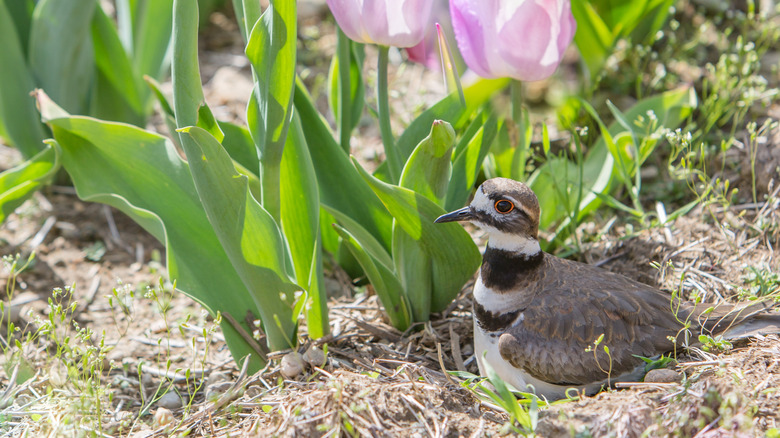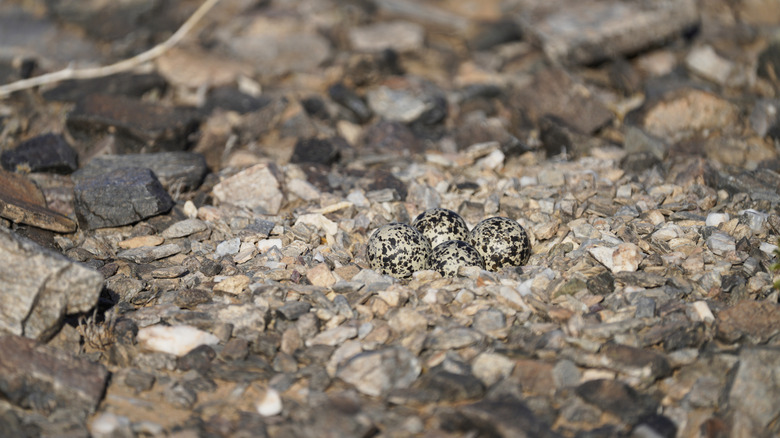Attract Killdeer Birds To Your Yard With One Simple Addition
If you hear a shrill call that sounds like "kill-dee," don't be fooled into thinking you've been transported onto the set of a TV murder mystery. Instead, it's the call of a native marsh bird aptly named a killdeer based on its distinctive song. These noisy yet endearing wading avians have adapted well to urban life. They're often spotted foraging in open areas like golf courses, broad highway shoulders, airports, and, luckily for homeowners, expansive backyards. The trouble is, it doesn't matter where you hang a bird feeder in your yard — killdeer don't visit them. If you want to encourage these vocal feathered friends, forgo the food. Instead, offer them a safe nesting area by creating a large, gravel-filled depression.
Killdeer (Charadrius vociferus) are the heftiest of the many ringed plovers in America. They live permanently in the southern U.S. to Mexico and migrate between there and the colder north states — right up to Alaska. States where you'll see them year-round include the Carolinas, Virginia, and Texas. They're not bothered by people; in fact, you'll often find them nesting on gravel rooftops and on the ground in parking lots. They like to eat insects, making a mad dash at everything from earthworms and snails to grasshoppers and centipedes — this natural pest control is one of the main reasons you'll want them visiting your garden regularly.
Build a nest
If you want a killdeer couple to nest in your backyard, you need to take a leaf from nature. These birds lay their eggs in a shallow depression — just deep enough to prevent the eggs from rolling away. Create similar hollows in open areas of your garden away from heavy foot traffic and areas where pesticides are used. Gravel is a favored material to line a nest with. Other rough, earth-colored mediums, such as wood chips, twigs, white-colored pebbles, and grass, will also do the trick. Like many shorebirds, killdeer prefer materials that camouflage their stone-like eggs.
Killdeer lay eggs early in the breeding season, starting in March in some places. This means you'll want to have your nest (or nests) ready in early to late February to give breeding pairs a chance to find it. Once it is known to the birds in your area as a safe spot, you could be lucky enough to see as many as three or more clutches hatch in a season. A warning to keen backyard bird watchers: Killdeer chicks hatch ready to leave immediately, and adults typically remove the shells to avoid attracting predators. If you're not observant, you may be fooled into thinking someone moved the bird nest in your yard — or, perhaps, that it was never there at all!

